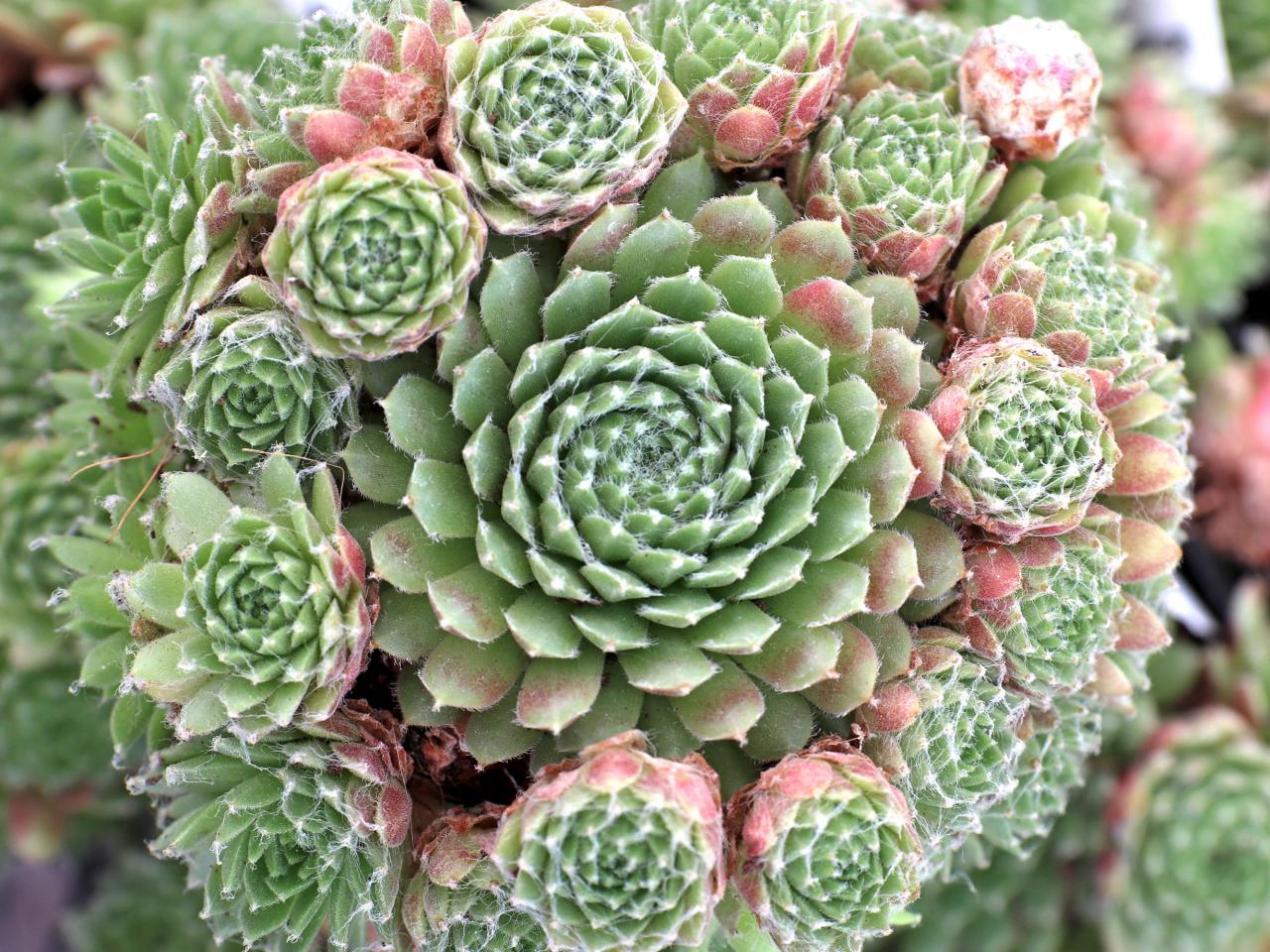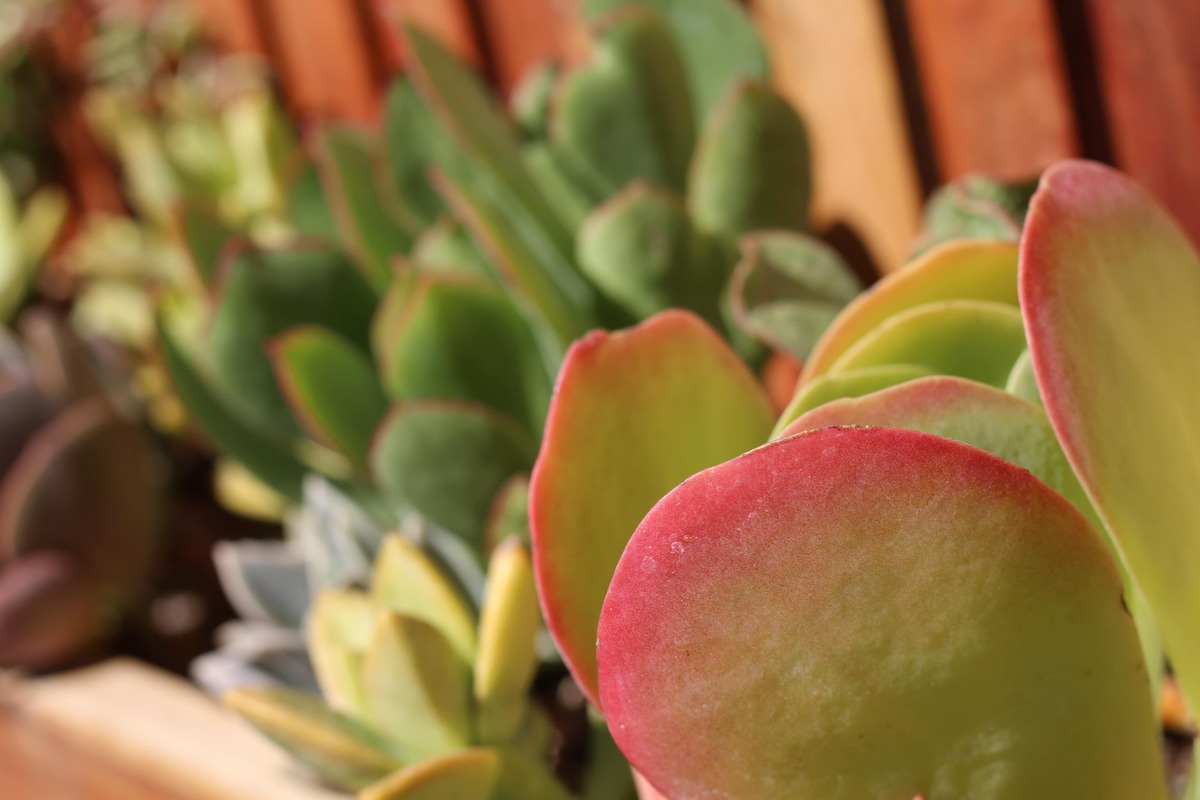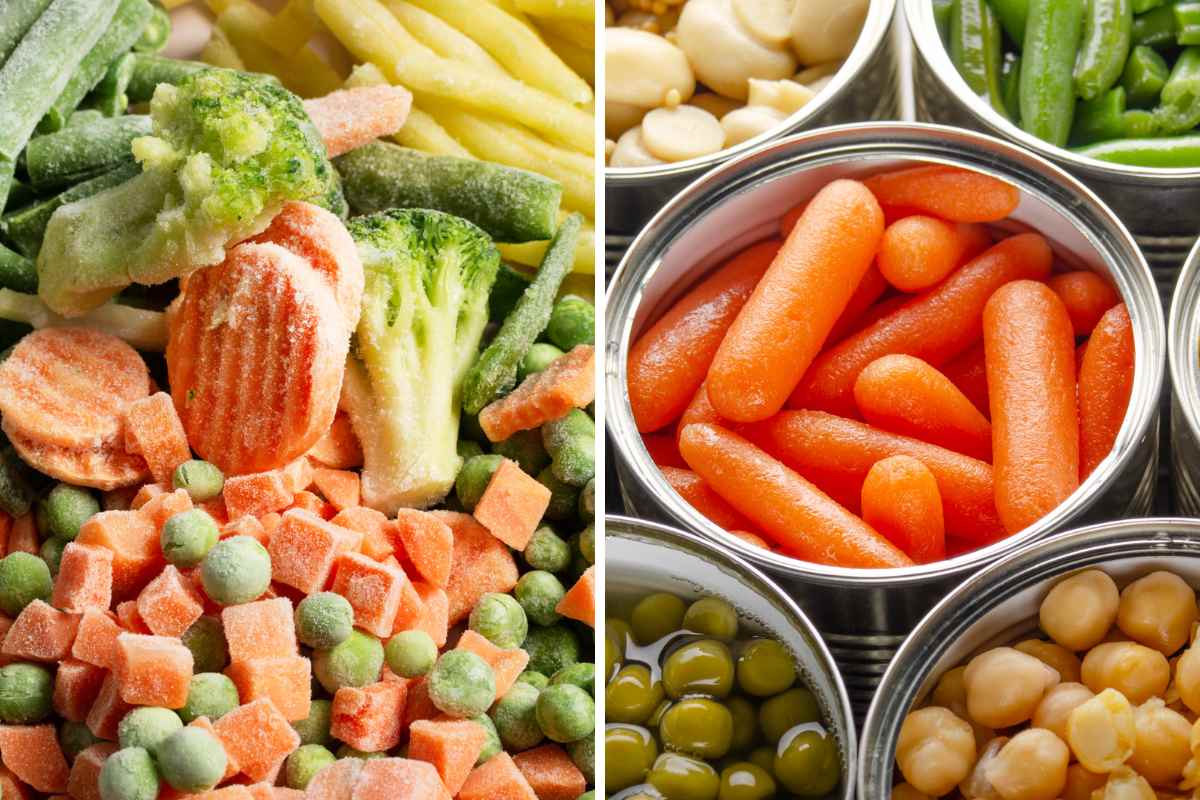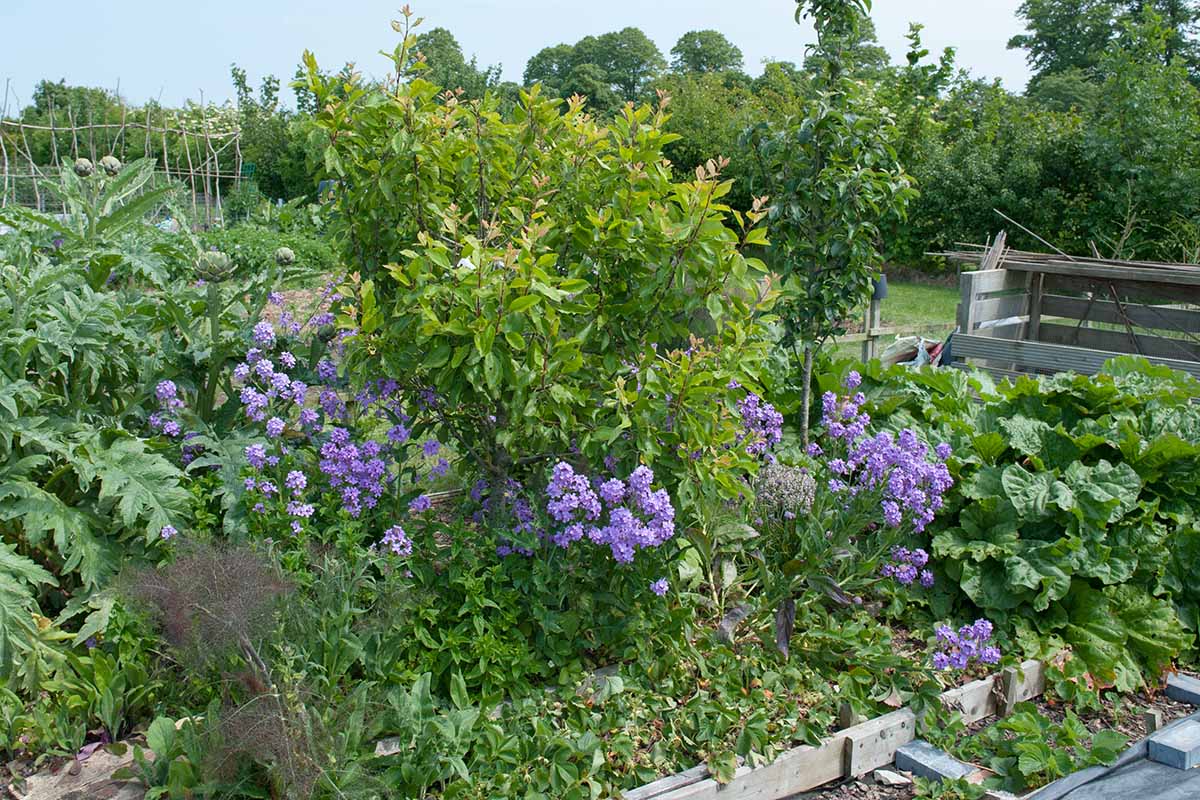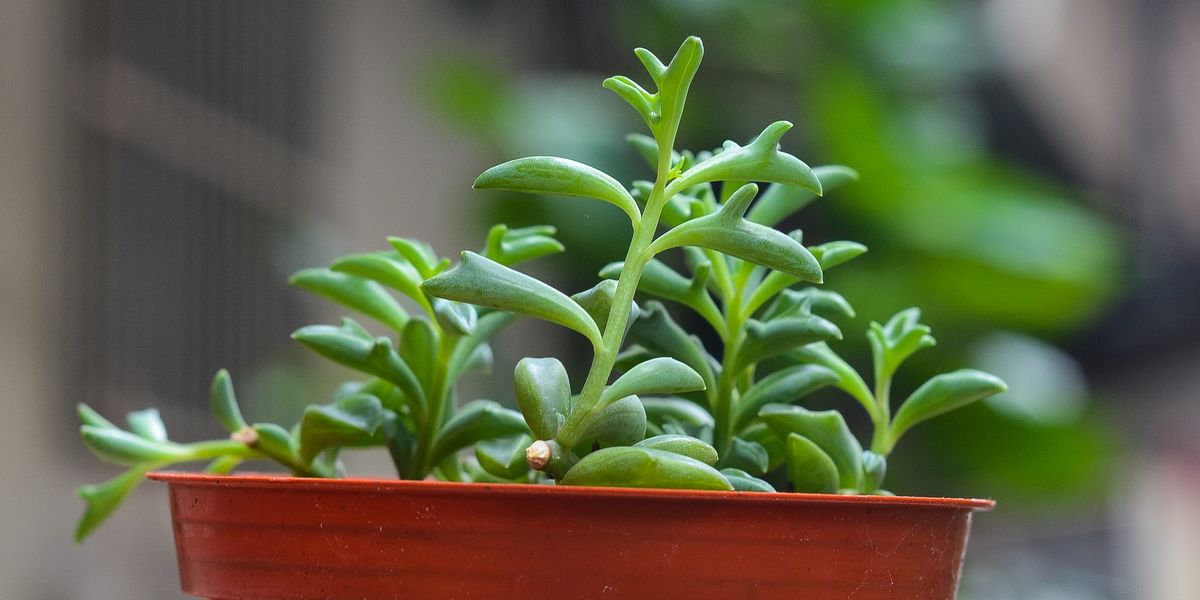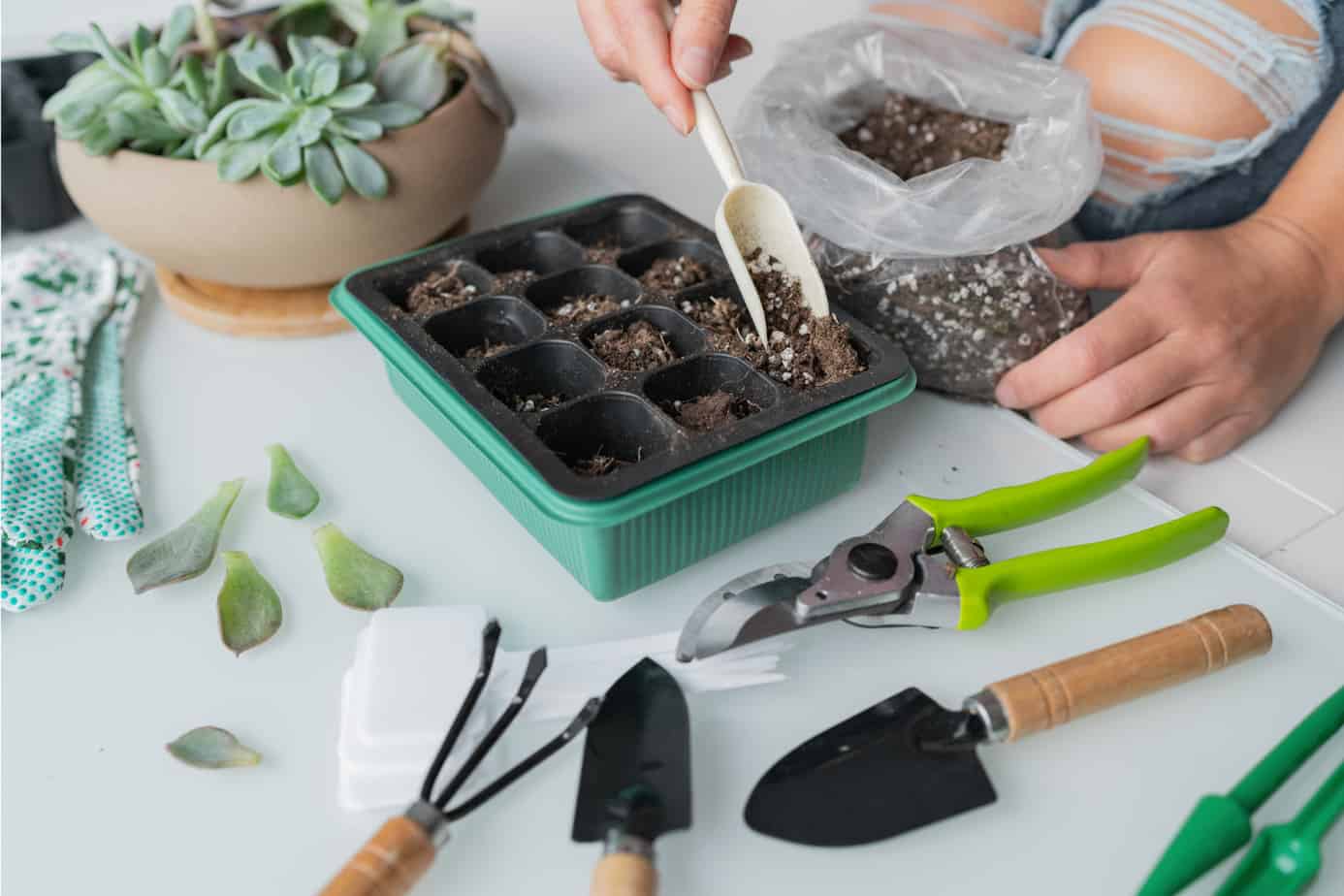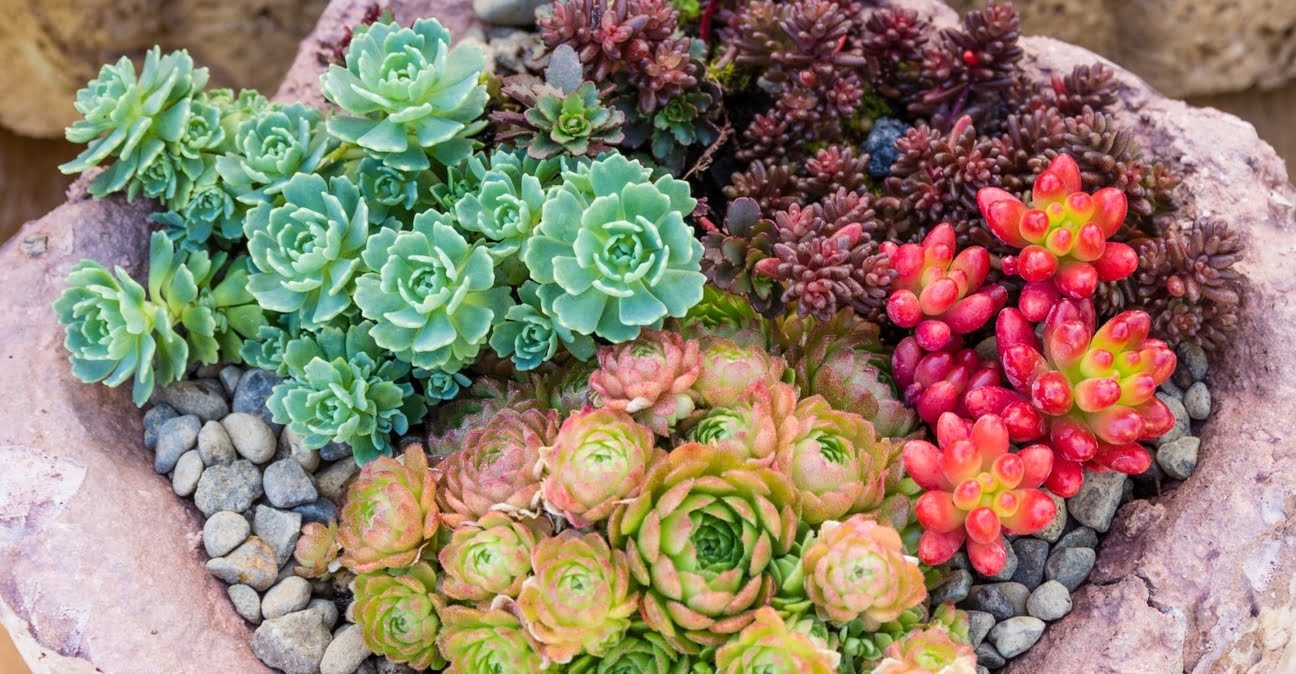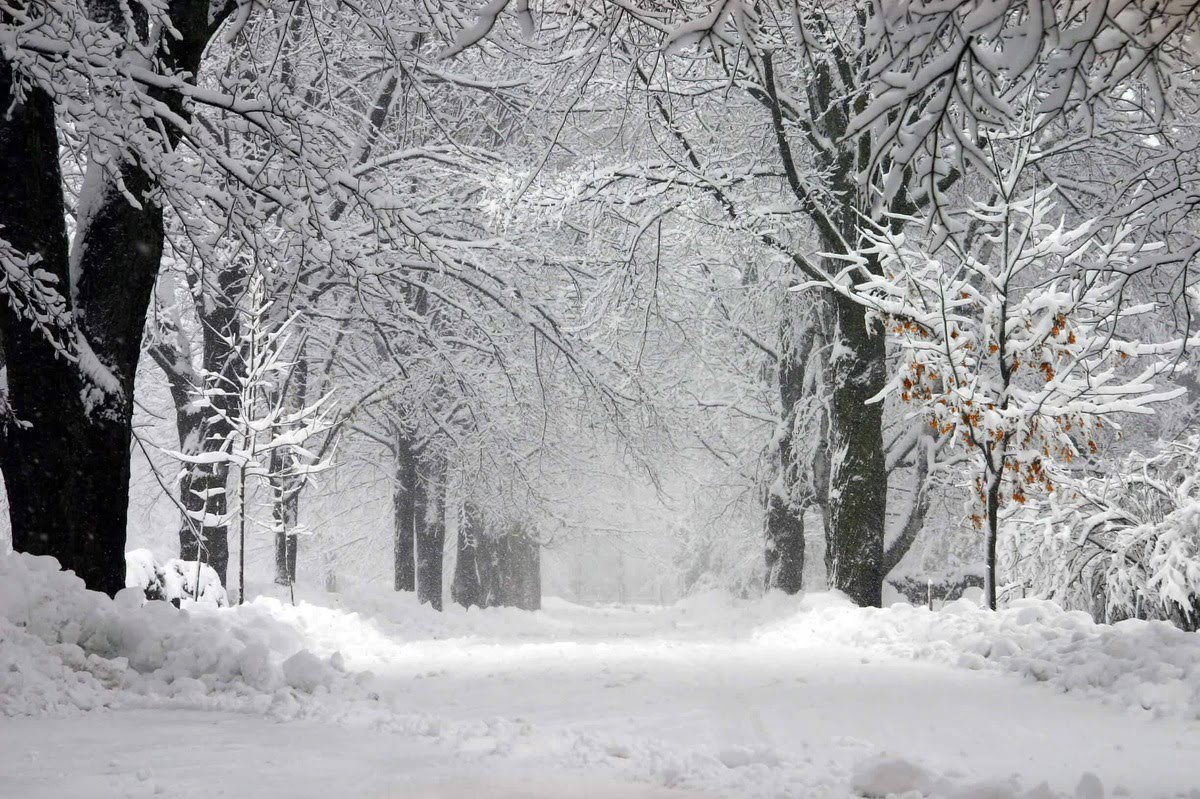Home>Gardening Techniques>Seasonal Gardening>Which Succulents Can Survive Winter
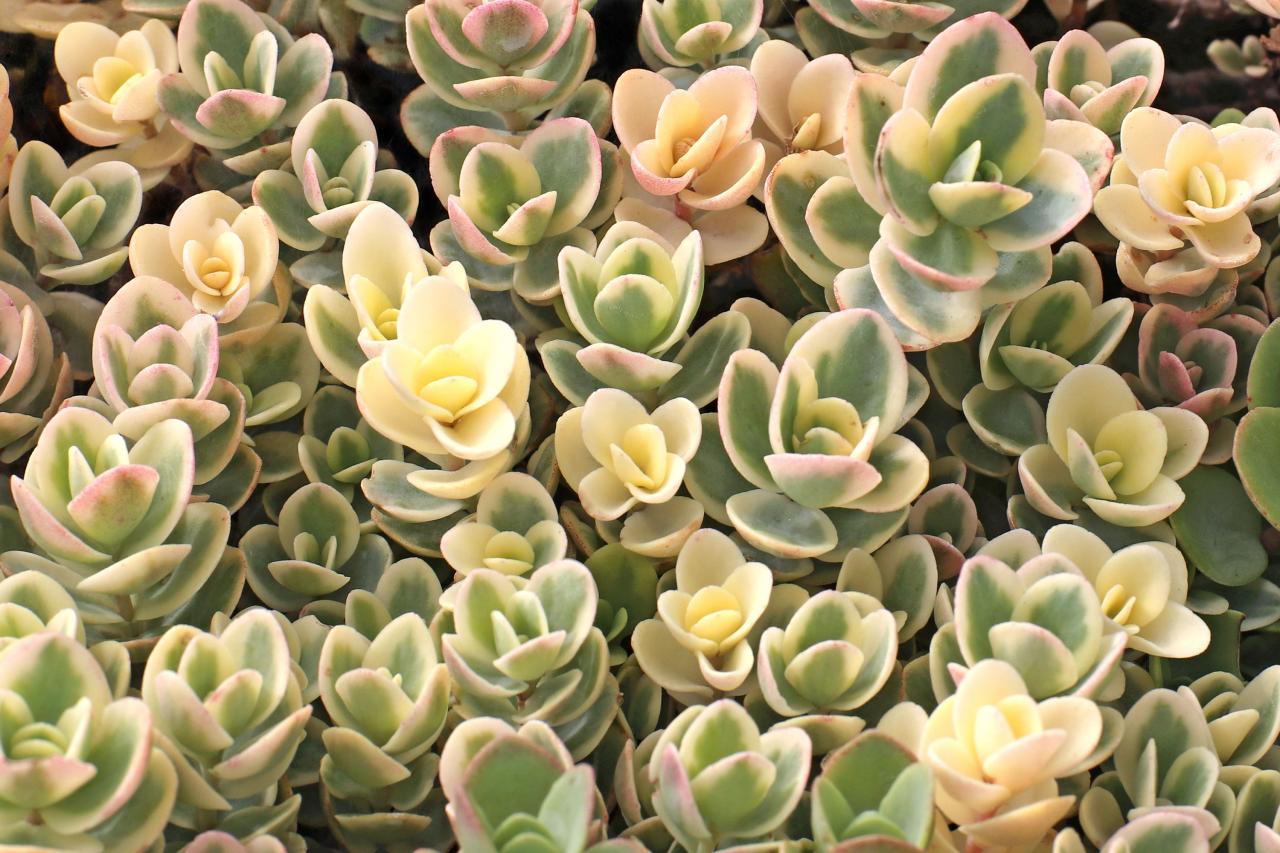

Seasonal Gardening
Which Succulents Can Survive Winter
Modified: February 6, 2024
Discover the hardy succulents that can thrive during the winter months. Explore our seasonal gardening tips and tricks to keep your succulent garden flourishing in colder temperatures.
(Many of the links in this article redirect to a specific reviewed product. Your purchase of these products through affiliate links helps to generate commission for Chicagolandgardening.com, at no extra cost. Learn more)
Table of Contents
- Introduction
- Factors to Consider for Succulents’ Winter Survival
- Succulents That Can Survive Winter Outdoors
- Hens and Chicks (Sempervivum)
- Sedum (Stonecrop)
- Yucca
- Agave
- Ice Plant (Delosperma)
- Echeveria
- Sempervivum (Hen-and-Chicks)
- Aloe
- Kalanchoe
- Opuntia (Prickly Pear)
- Agave victoriae-reginae (Queen Victoria Agave)
- Portulaca (Moss Rose)
- Dudleya (Liveforever)
- Euphorbia
- Succulents That Require Winter Protection
- Conclusion
Introduction
Succulents are a popular choice for gardens year-round due to their low maintenance and ability to withstand drought. However, when winter arrives, many succulent enthusiasts worry about the survival of their beloved plants. While some succulents are more sensitive to cold temperatures and require winter protection, others are incredibly resilient and can brave the chilly weather on their own.
When it comes to selecting succulents that can survive winter, there are a few factors to consider. The first is the hardiness zone of your location. Different succulents have different temperature tolerances, so it’s essential to choose ones that can withstand the winter temperatures in your region.
Another crucial factor is the amount of sunlight your garden receives during the winter months. Succulents thrive in bright, indirect sunlight, so if your garden is shaded during winter, certain varieties may struggle to survive. Conversely, if your garden receives full sun, you can choose from a wider range of succulents.
To help you choose the right succulents for your winter garden, we’ve compiled a list of hardy varieties that can withstand the cold without extra protection. These succulents are known for their ability to survive freezing temperatures, making them ideal choices for outdoor winter gardening:
Factors to Consider for Succulents’ Winter Survival
While succulents are generally tough plants, some require extra care and protection during the winter months. Here are a few factors to consider to ensure your succulents’ winter survival:
- Hardiness Zone: Understanding your hardiness zone is crucial for choosing the right succulents. Each plant has its own temperature tolerance, so be sure to select varieties that can withstand the cold temperatures in your region.
- Light Requirements: Succulents typically require bright, indirect sunlight. If your garden receives limited sunlight during winter, you might need to provide supplemental lighting to ensure your succulents receive adequate light for photosynthesis and growth.
- Watering: During winter, succulents enter a dormant phase, and their water requirements decrease. Overwatering can lead to root rot and damage the plant. Water sparingly, allowing the soil to dry out between watering sessions.
- Protection from Frost: Frost can be damaging to succulents, causing the plant cells to burst and resulting in irreversible damage. Consider covering vulnerable plants with frost cloths or bringing them indoors during freezing temperatures.
- Wind Protection: Strong winter winds can cause dehydration in succulents. If your garden is exposed to gusty winds, consider creating windbreaks using fences, hedges, or other structures to protect your succulents.
- Soil Drainage: Succulents thrive in well-draining soil. Ensure your planting medium is porous and drains excess moisture efficiently. Poor drainage can lead to root rot and increase the risk of cold damage.
- Proper Containers: If you plan to keep your succulents in containers during winter, make sure they have drainage holes to prevent water accumulation. Use pots made from materials that provide insulation, such as terracotta or ceramic, to protect the roots from extreme temperature fluctuations.
By considering these factors, you can provide the optimal conditions for your succulents’ winter survival. Remember to adjust your care routine according to the specific needs of each succulent variety to ensure their health and longevity.
Succulents That Can Survive Winter Outdoors
If you’re looking for succulents that can withstand the harsh winter weather without the need for extra protection, here are some hardy varieties that are known for their ability to survive freezing temperatures:
- Hens and Chicks (Sempervivum): A classic choice for winter gardens, hens and chicks are incredibly cold hardy. These rosette-shaped succulents come in various colors and can tolerate temperatures down to -30°F (-34°C).
- Sedum (Stonecrop): With its thick, fleshy leaves and sturdy stems, sedum is a great choice for winter gardens. Popular varieties like Sedum spectabile and Sedum ternatum can withstand freezing temperatures and even bloom in the colder months.
- Yucca: Yucca plants are known for their ability to tolerate extreme temperatures, including both heat and cold. They can survive winter temperatures as low as -10°F (-23°C) and add a unique architectural element to your garden.
- Agave: Agave plants are native to arid regions and are well adapted to harsh conditions. Some species, like Agave parryi and Agave americana, can tolerate temperatures as low as 0°F (-18°C) and provide a striking focal point in your winter garden.
- Ice Plant (Delosperma): Ice plants are known for their cheerful, daisy-like flowers and ability to tolerate cold temperatures. Varieties like Delosperma cooperi and Delosperma nubigenum can survive temperatures down to -20°F (-29°C).
- Echeveria: Echeveria is a popular genus of succulents with rosette-shaped leaves in a wide range of colors. While not as cold hardy as some other succulents, certain varieties, like Echeveria elegans and Echeveria derenbergii, can tolerate temperatures down to 20°F (-7°C).
- Sempervivum (Hen-and-Chicks): Sempervivum, also known as hen-and-chicks, are cold-hardy succulents that form tight rosettes. They are known for their ability to survive in alpine regions and can tolerate temperatures as low as -20°F (-29°C).
- Aloe: While most aloes are native to warm climates, some species like Aloe vera and Aloe aristata can handle freezing temperatures for short periods. They are best planted in containers and brought indoors during severe cold snaps.
- Kalanchoe: Kalanchoe plants come in various shapes and sizes and are incredibly resilient. Most varieties can handle temperatures down to 25°F (-4°C) and can even tolerate light frost without significant damage.
- Opuntia (Prickly Pear): Prickly Pear cacti, also known as Opuntia, are hardy succulents that can survive in extreme weather conditions. They are native to desert regions and can tolerate temperatures as low as -20°F (-29°C).
- Agave victoriae-reginae (Queen Victoria Agave): This stunning agave species can withstand freezing temperatures down to -10°F (-23°C). With its unique white markings and architectural form, it adds a touch of elegance to any winter garden.
- Portulaca (Moss Rose): Portulaca is a low-growing succulent that produces vibrant flowers in various colors. While it prefers warm climates, certain varieties can tolerate temperatures as low as 20°F (-7°C) and provide winter blooms.
- Dudleya (Liveforever): Dudleya succulents are native to North America and are known for their ability to withstand cold temperatures. Different species have different tolerances, but many can handle temperatures as low as 20°F (-7°C).
- Euphorbia: Many Euphorbia species, including Euphorbia tirucalli and Euphorbia milii, are cold hardy and can tolerate temperatures as low as 20°F (-7°C). They come in various shapes and sizes, adding interest to your winter garden.
When selecting succulents for outdoor winter gardening, it’s important to consider their specific temperature tolerances and provide them with the right growing conditions. With these hardy varieties, you can create a vibrant and resilient garden that will thrive even during the coldest months of the year.
Hens and Chicks (Sempervivum)
Hens and Chicks, also known as Sempervivum, are popular succulents known for their rosette-like growth habit. These hardy plants come in various colors and textures, making them a versatile choice for winter gardens.
Hens and Chicks are incredibly cold hardy and can survive temperatures as low as -30°F (-34°C). Their ability to adapt to harsh weather conditions has earned them the reputation of being “indestructible” succulents. These plants are native to mountainous regions, where they have to endure freezing temperatures and snowfall.
One of the unique characteristics of Hens and Chicks is their ability to reproduce. The “hen” is the larger, central rosette, while the “chicks” are the smaller offsets that grow around the mother plant. These chicks can be easily separated and replanted to form new colonies, making Hens and Chicks a great choice for spreading and filling in empty spaces in your winter garden.
Hens and Chicks prefer bright, indirect sunlight, but they can also tolerate some shade. When planted in well-draining soil, these succulents are drought-tolerant and require minimal watering, even during winter. However, it’s important to ensure that the soil has proper drainage to prevent the roots from sitting in water, which can lead to rot.
While Hens and Chicks can survive winter without extra protection, they can benefit from some basic care. It’s a good idea to keep them dry during freezing temperatures to avoid any potential damage caused by ice formation. If your region experiences heavy snowfall, gently brush off any snow that accumulates on the rosettes to prevent them from becoming weighed down.
With their resilient nature and striking appearance, Hens and Chicks make an excellent addition to winter gardens. They can be planted in rock gardens, containers, or used as ground cover. Their ability to withstand freezing temperatures and their ability to propagate easily make them a popular choice for both novice and experienced gardeners.
Sedum (Stonecrop)
Sedum, also known as Stonecrop, is a diverse genus of succulents that encompasses various species and cultivars. These hardy plants are excellent choices for winter gardens, thanks to their ability to tolerate freezing temperatures and even bloom during the colder months.
One of the reasons Sedum is favored for winter gardens is its thick and fleshy leaves, which store moisture and help the plant withstand drought conditions. These leaves also play a crucial role in protecting the plant from freezing temperatures, as they act as insulation against the cold. The ability to retain water within their leaves enables Sedum to survive in arid environments, making them incredibly resilient.
Popular varieties of Sedum, such as Sedum spectabile and Sedum ternatum, can tolerate temperatures as low as -30°F (-34°C) and continue to showcase their beauty throughout the winter season. These sedums produce vibrant clusters of flowers in various colors, adding visual interest to the winter garden.
Sedum thrives in full sun but can also tolerate partial shade. They prefer well-draining soil and can handle drought conditions, making them low-maintenance plants. However, during winter, it’s important to avoid overwatering, as excess moisture can cause the roots to rot. It is best to allow the soil to dry out between watering sessions to maintain the plants’ health during the dormant period.
When it comes to winter protection, Sedum typically does not require much. Their natural hardiness allows them to endure freezing temperatures without significant damage. However, if you live in an area with heavy snowfall, you can gently brush off any accumulated snow from the plants to prevent them from becoming weighed down and potentially breaking.
Sedum is a versatile plant that can be used in a variety of garden settings. Whether planted in the ground or in containers, they create vibrant displays of color and texture. They are often used in rock gardens, borders, and as ground cover to add interest and structure to the winter landscape.
With their ability to survive freezing temperatures, their attractive foliage, and their ability to bloom in winter, Sedum is an excellent choice for those looking to add hardy succulents to their winter garden. Their resilience and beauty make them a favorite among gardeners and a valuable addition to any outdoor space.
Yucca
Yucca plants are well-known for their unique and striking appearance, making them a popular choice for winter gardens. These hardy succulents are not only able to survive freezing temperatures but also add a touch of architectural elegance to any outdoor space.
Yuccas are native to arid regions and are accustomed to harsh weather conditions, including both heat and cold. They can withstand winter temperatures as low as -10°F (-23°C), making them an excellent choice for gardens in colder regions.
One of the standout features of Yucca plants is their sword-like leaves, which can vary in color and texture depending on the species. These rigid leaves are designed to conserve water and are highly drought-tolerant. They can hold moisture efficiently, allowing Yuccas to thrive even in dry winter conditions.
Yuccas prefer full sun exposure and require well-draining soil. They are tolerant of various soil types, including sandy or rocky soil, making them versatile in different garden settings. However, it’s important to be cautious of overwatering during the winter months. These succulents are adapted to survive with minimal moisture and can be susceptible to root rot if the soil remains excessively moist for extended periods.
While Yuccas are naturally cold hardy, providing some winter protection can help prevent any potential damage during extreme weather events. Mulching the base of the plant with a thick layer of organic material, such as straw or wood chips, can help insulate the root system and protect it from severe cold. Providing windbreaks, such as fences or hedges, can also help shield Yuccas from strong winter winds.
Yucca plants are not only visually appealing but also offer additional benefits to the garden ecosystem. They attract pollinators like hummingbirds and bees with their tall flower spikes, which are often adorned with cream-colored or white blossoms.
With their architectural form and ability to withstand freezing temperatures, Yuccas make a striking addition to any winter garden. Whether planted as a focal point, in groupings, or as a border plant, they add a dramatic element that can endure even the harshest winter conditions.
Agave
Agave plants are known for their bold and striking appearance, making them a popular choice for winter gardens. These resilient succulents are native to arid regions, and their ability to survive in harsh conditions makes them well-suited for cold winter climates.
Agave plants have thick, fleshy leaves that store water, allowing them to thrive in drought-like conditions. This adaptability to arid environments also enables them to withstand freezing temperatures. Some species, such as Agave parryi and Agave americana, can tolerate temperatures as low as 0°F (-18°C) without significant damage.
One of the remarkable aspects of Agave plants is their unique architectural form. They often form rosettes or spiky clusters, creating a dramatic and sculptural presence in the garden. With their bold shapes and various sizes, Agave plants make excellent focal points or additions to rock gardens and desert-themed landscapes.
Agave plants prefer full sun and well-draining soil. They have low water requirements and can thrive with minimal irrigation. During the winter, it’s important to allow the soil to dry out between watering sessions to prevent root rot. Overwatering can be particularly detrimental to Agave plants during dormancy.
While Agave plants are naturally adapted to withstand cold temperatures, a few protective measures can help ensure their winter survival. Applying a thick layer of organic mulch around the base of the plant can insulate the roots and provide extra protection during extreme cold snaps. Additionally, providing windbreaks, such as fences or shrubs, can help shield Agave plants from strong winter winds, which can lead to dehydration.
Agave plants are not only visually captivating but also low-maintenance additions to the garden. Once established, they require minimal care and are highly resistant to pests and diseases. Their ability to survive winter and thrive in various climates makes them a valuable choice for both beginner and experienced gardeners.
With their striking appearance, hardiness, and resistance to extreme temperatures, Agave plants bring a touch of desert beauty to winter gardens. Whether as standalone specimens, in groupings, or as part of a xeriscape design, Agave plants can enhance the aesthetic appeal of your outdoor space even during the coldest months of the year.
Ice Plant (Delosperma)
Ice Plant, scientifically known as Delosperma, is a stunning succulent that is highly appreciated for its vibrant flowers and ability to thrive in chilly winter conditions. This cold-hardy plant is a great addition to any winter garden, providing a burst of color during the colder months.
Ice Plant gets its name from the glistening appearance of its foliage, which resembles ice crystals. This plant produces daisy-like flowers in a wide range of hues, including shades of purple, pink, orange, and yellow. The colorful flowers contrast beautifully against the green or grayish-green foliage, creating a striking visual display.
One of the remarkable features of Ice Plant is its ability to tolerate freezing temperatures. Certain varieties, such as Delosperma cooperi and Delosperma nubigenum, can withstand temperatures as low as -20°F (-29°C) without suffering from significant damage. This resilience allows Ice Plant to thrive in winter gardens, where many other plants struggle with the cold.
Ice Plant thrives in full sun and well-draining soil. It is well-suited for rock gardens, as it can tolerate rocky and sandy soils. This succulent prefers drier conditions, making it a great choice for those who wish to conserve water. During winter, it’s essential to avoid overwatering and ensure that the soil is dry between watering sessions to prevent root rot.
In terms of winter protection, Ice Plant generally does not require much. Its natural hardiness allows it to withstand freezing temperatures with ease. However, if you live in an area with heavy snowfall, gently brush off any accumulated snow on the plants to prevent them from becoming weighed down and potentially breaking.
Ice Plant is not only a beautiful addition to winter gardens, but it also provides additional benefits to the ecosystem. It attracts bees, butterflies, and other pollinators with its nectar-rich flowers, contributing to the overall biodiversity of the garden.
With its eye-catching flowers, adaptability to cold temperatures, and low-maintenance requirements, Ice Plant is a fantastic addition to winter gardens. Whether planted in beds, containers, or used as ground cover, this succulent adds a vibrant touch to the winter landscape and brings a refreshing burst of color during the colder months.
Echeveria
Echeveria is a popular genus of succulents beloved for its striking rosette-shaped foliage and stunning range of colors. These dainty and versatile plants are not only visually appealing but also known for their ability to withstand winter conditions, making them a great choice for winter gardens.
Echeveria succulents come in a variety of sizes, colors, and textures, ranging from powdery blues and soft pastels to vibrant pinks, purples, and greens. Their thick and fleshy leaves allow them to tolerate periods of drought and survive winter temperatures as low as 20°F (-7°C), depending on the variety.
These succulents thrive in well-draining soil and require bright, indirect light. While Echeveria generally loves full sun exposure, during winter, it’s essential to provide them with protection from intense afternoon sunlight to prevent sunburn. Placing them in a spot where they receive ample sunlight in the morning or diffused light throughout the day is ideal.
During the winter months, Echeverias enter a period of dormancy, slowing down their growth and water requirements. It is crucial not to overwater them during this time, as their roots may become susceptible to rot. Let the soil dry out completely before watering and adjust the frequency based on the specific needs of your Echeverias.
While Echeveria is generally hardy, it’s recommended to provide some basic winter protection, especially in areas with harsh winters. If frost or freezing temperatures are expected, consider covering your Echeverias with frost cloths or moving them to a sheltered location like a greenhouse or patio. This precautionary measure can help prevent frost damage and ensure their continued health and beauty.
Echeveria succulents are versatile and can be planted in various garden settings. They make excellent choices for containers, rock gardens, vertical gardens, or as accents in flower beds. Their symmetrically arranged leaves add an element of elegance and visual interest to any arrangement or design.
With their stunning aesthetics and ability to tolerate winter conditions, Echeverias are fantastic additions to winter gardens. Their resilience and unique beauty make them a worthwhile investment for succulent enthusiasts and gardening enthusiasts alike, ensuring a vibrant and captivating garden even during the colder months.
Sempervivum (Hen-and-Chicks)
Sempervivum, commonly known as Hen-and-Chicks or Houseleeks, is a charming and resilient succulent that is widely recognized for its unique growth habit and ability to withstand harsh winter conditions.
Sempervivum plants form tight rosettes of fleshy, pointed leaves that resemble the shape of a hen, hence the common name “Hen-and-Chicks”. These rosettes often produce numerous offsets or “chicks” around the base, giving the plant a clustered and eye-catching appearance. These offsets can be easily separated and replanted, making them a great option for filling in bare spots in your garden or sharing with fellow plant enthusiasts.
One of the distinguishing features of Sempervivum is its superb cold tolerance. These succulents are native to mountainous regions and have evolved to withstand freezing temperatures. They can survive winter temperatures as low as -20°F (-29°C) without experiencing significant damage. Their ability to thrive in alpine environments has earned them a reputation for being incredibly tough and resilient.
Sempervivum plants are not only known for their ability to withstand the cold but also for their low maintenance requirements. They prefer full sun exposure but can tolerate partial shade, making them a versatile choice for various garden settings. These succulents thrive in well-draining soil and are surprisingly drought-tolerant once established. However, it’s essential to avoid overwatering, as excessive moisture can lead to root rot.
During winter, Sempervivum enters a period of dormancy, during which their growth slows down. This dormancy period allows the plant to conserve energy and survive with minimal water. However, it’s crucial to provide them with well-draining soil to prevent waterlogged conditions, which can be detrimental to their health.
With their unique growth habit and remarkable cold tolerance, Sempervivum plants are excellent choices for winter gardens and rockeries. They can be planted in the ground, in containers, or even in crevices or cracks in stoneworks. Their ability to withstand freezing temperatures and add a touch of sculptural beauty makes them perfect for creating captivating and hardy displays in your outdoor space.
Aloe
Aloe plants are well-known succulents that are beloved for their unique appearance and numerous health benefits. While most Aloes are native to warm climates, some species can tolerate freezing temperatures, making them a great addition to winter gardens.
Aloes are characterized by their rosette-shaped clusters of thick, fleshy leaves that are often adorned with spines or teeth along the edges. Their striking foliage comes in a variety of colors, ranging from green to blue-green and even vibrant shades of red and orange. These plants can serve as dramatic focal points in a winter landscape.
While Aloes are not as cold hardy as some other succulents, certain species can handle short periods of freezing temperatures. Aloe vera, the most widely recognized Aloe species, can tolerate temperatures as low as 25°F (-4°C) without significant damage. However, it’s important to note that long-term exposure to freezing temperatures can still be detrimental to their health.
When cultivating Aloes in winter gardens, it’s crucial to provide them with well-draining soil to prevent waterlogged conditions. These succulents prefer bright, indirect sunlight but can also tolerate some shade. If you live in an area with harsh winter weather, it’s recommended to plant Aloes in containers so that they can be easily brought indoors during extreme cold snaps.
During the winter months, Aloes undergo a period of dormancy, where their growth slows down and their water requirements decrease. It’s important to reduce watering during this time to prevent overhydration, which can lead to root rot. Allow the soil to dry out partially between watering sessions but ensure that the plant doesn’t completely dry out.
In addition to their aesthetic appeal, Aloe plants offer a range of health benefits. The gel inside their leaves is often used topically to soothe burns and skin irritations. Having Aloe plants readily available in your garden allows you to harness these benefits throughout the year.
With their striking forms and ability to withstand freezing temperatures, Aloes make a valuable addition to winter gardens. Whether planted in containers, rock gardens, or as part of a succulent arrangement, these versatile plants will add visual interest and a touch of exotic beauty to your outdoor space.
Kalanchoe
Kalanchoe is a popular genus of succulent plants that offers a stunning display of vibrant colors and unique flower formations. These hardy succulents are not only visually appealing but also known for their ability to endure winter conditions, making them an excellent choice for winter gardens.
Kalanchoe plants are available in a variety of species, with each offering its own distinct characteristics. They produce dense clusters of fleshy, thick leaves, often tinted with hints of red, pink, or yellow. These eye-catching leaves provide an attractive backdrop for the main highlight of Kalanchoe plants—their stunning flower clusters.
One of the reasons Kalanchoe is favored for winter gardens is its cold tolerance. Most species of Kalanchoe can withstand temperatures as low as 25°F (-4°C) without experiencing significant damage. This resilience allows them to thrive in cooler climates and contribute to the beauty of the winter garden.
Kalanchoe plants prefer bright, indirect sunlight but can tolerate some shade. They are adaptable and can thrive in various types of soil, as long as it is well-draining. Overwatering is a common issue with Kalanchoe, so it’s crucial to allow the soil to dry out between watering sessions to prevent root rot.
When it comes to winter care, Kalanchoe benefits from some basic protection. While they can handle colder temperatures, it’s important to keep them away from freezing drafts or prolonged exposure to frost. If you’re growing Kalanchoe outdoors, consider covering them with frost cloths or bringing them indoors during extreme cold snaps.
In addition to their resilient nature, Kalanchoe plants offer the benefit of winter blooms. Many species produce impressive clusters of vibrant flowers during the cooler months, adding a splash of color to your winter garden and brightening up dreary winter days.
Kalanchoe plants are versatile and can be used in a variety of ways in the garden. They look beautiful when planted in containers, hanging baskets, or as ground cover. Their ability to withstand cooler temperatures and their stunning floral displays make them a favorite among gardening enthusiasts.
With their striking leaf formations, winter blooms, and adaptability to cooler temperatures, Kalanchoe plants are fantastic additions to any winter garden. Their resilience and vibrant colors bring cheer and beauty to outdoor spaces during the colder months.
Opuntia (Prickly Pear)
Opuntia, commonly known as Prickly Pear, is a fascinating and highly adaptable succulent that adds a touch of unique beauty to winter gardens. These hardy plants are not only visually intriguing with their distinctive pad-like structures, but they are also incredibly resilient, making them an excellent choice for cold climates.
Opuntia plants are native to arid and semi-arid regions, where they have evolved to tolerate extreme weather conditions. They are known for their flat, paddle-shaped stems or pads that are covered in sharp spines. These pads contain a high concentration of water, allowing the plant to survive in periods of drought and freezing temperatures.
One of the remarkable aspects of Prickly Pear is its cold hardiness. These succulents can withstand temperatures as low as -20°F (-29°C) without suffering significant damage. This makes them well-suited for winter gardens in colder regions, where their robust nature adds a touch of drama to the landscape.
Opuntia plants thrive in full sun exposure and well-draining soil. They are incredibly tolerant of various soil types, ranging from sandy to rocky compositions. Opuntia’s water requirements are relatively low, but proper drainage is crucial to prevent excess moisture, which can lead to root rot.
While Opuntia is generally hardy, it can benefit from some winter protection, especially during extended periods of freezing temperatures or heavy snowfall. Applying a thick layer of organic mulch around the base of the plant can help insulate the roots and provide additional protection during extreme cold snaps.
Another noteworthy feature of Prickly Pear is their vibrant flowers and, in some cases, edible fruit. They produce bright blossoms in shades of yellow, orange, pink, or red, which contrast beautifully against the green pads. Moreover, the fruit of certain Opuntia species, known as prickly pears, are not only visually appealing but also have culinary uses.
Opuntia plants are versatile and can be used in a range of garden settings. They make stunning standalone specimens, provide a unique element to rock gardens, and can even be used as natural hedges or barriers. Their ability to withstand cold temperatures and their captivating aesthetic make them a valuable addition to any winter garden.
Agave victoriae-reginae (Queen Victoria Agave)
Agave victoriae-reginae, commonly known as Queen Victoria Agave, is a magnificent succulent plant that adds a touch of elegance and beauty to winter gardens. With its striking geometric rosette and unique black and white leaf pattern, this agave species is a true standout in any garden.
Known for its cold tolerance, Queen Victoria Agave can withstand temperatures as low as -10°F (-23°C). This makes it a great choice for winter gardens in colder regions where many other plants struggle to survive. Its resilience to freezing temperatures allows it to maintain its beauty and structural integrity even in harsh winter conditions.
The Queen Victoria Agave features compact rosettes with thick and rigid leaves that are edged with sharp teeth and tipped with a pointed spine. The eye-catching black and white ornamental pattern on the leaves adds a touch of sophistication to its overall appearance. The contrast of the dark and light colors gives it a regal and dramatic aesthetic, hence its name.
This agave species prefers full sun exposure but can tolerate partial shade. It thrives in well-draining soil and is highly drought-tolerant once established. Like other agave plants, Queen Victoria Agave has low water requirements, making it an excellent choice for water-wise gardens.
While Queen Victoria Agave is naturally well-equipped to handle winter conditions, it can still benefit from some minimal winter care. Providing a well-draining soil medium and avoiding overwatering are key to preventing root rot during the colder months. During periods of heavy snowfall, gently remove any accumulated snow from the leaves to prevent breakage.
Queen Victoria Agave is often used as a focal point in the garden, thanks to its striking appearance. It can be planted in containers to be admired on patios or placed strategically in a rock garden to create a visually captivating display. Its unique beauty and resilience make it an excellent choice for those looking to create a statement in their winter garden.
With its bold and regal presence, Agave victoriae-reginae demands attention in any winter garden. Its ability to withstand freezing temperatures and its stunning ornamental pattern make it a standout choice for those seeking a visually captivating and low-maintenance succulent for their outdoor space.
Portulaca (Moss Rose)
Portulaca, commonly known as Moss Rose, is a delightful and resilient succulent that is perfect for adding a splash of vibrant color to winter gardens. With its petite yet radiant blooms and ability to withstand cooler temperatures, Moss Rose is a wonderful choice for those seeking a winter-flowering succulent.
One of the standout features of Moss Rose is its vibrant and diverse color palette. Its dainty, rose-like flowers come in an array of vibrant shades, including pink, red, yellow, orange, and white. These colorful blooms create a striking contrast against the succulent’s fleshy, cylindrical foliage, making it a focal point in any garden.
Moss Rose is known for its adaptability and resilience in adverse conditions. It can thrive in full sun or partial shade, making it a versatile choice for various garden settings. These succulents also have excellent drought tolerance, making them ideal for water-wise gardening. They can handle dry spells and minimal watering, which is especially beneficial during the winter months when watering is typically reduced.
When it comes to cold tolerance, Moss Rose is surprisingly hardy. It can withstand temperatures as low as 20°F (-7°C), making it suitable for winter gardens in regions with mild to moderate winters. While it may not survive severe frost or prolonged freezing temperatures, it can often withstand short periods of cold snaps.
Moss Rose is easy to care for, requiring well-draining soil to prevent waterlogging. It is essential to avoid overwatering, as this can lead to root rot. The succulent’s shallow root system allows it to rapidly dry out between watering sessions, contributing to its drought tolerance.
This succulent is commonly used as ground cover, thanks to its low-growing and spreading habit. It forms a dense mat of colorful blooms and foliage, adding a delightful carpet of color to the garden. Moss Rose is also suitable for containers, hanging baskets, or rock gardens, where its vibrant display can be appreciated up close.
With its stunningly vivid flowers, adaptability to different light conditions, and ability to withstand cooler temperatures, Portulaca (Moss Rose) is a must-have for any winter garden. Its resilience and vibrant displays make it an excellent choice for adding a pop of color and beauty to outdoor spaces during the colder months.
Dudleya (Liveforever)
Dudleya, commonly known as Liveforever, is a unique and charming succulent that adds a touch of natural beauty to winter gardens. With its rosette-shaped form and ability to survive in cool temperatures, Dudleya is an excellent choice for those looking to add a touch of elegance to their outdoor space.
Dudleya plants are native to regions along the coastal cliffs and rocky slopes of North America, primarily California and Baja California. They come in various species and have distinct features, such as fleshy leaves with powdery or chalky coatings that protect them from excessive sunlight and moisture loss.
One notable attribute of Dudleya is its ability to endure cooler temperatures. These succulents are remarkably cold-tolerant and can handle temperatures as low as 15°F (-9°C) without significant damage. Their resilience to frost and chilly conditions makes them an ideal choice for winter gardens in mild to moderate winter climates.
Dudleya plants thrive in full sun to partial shade, depending on the species. They prefer well-draining soil and are well-suited for rock gardens or coastal landscapes. These succulents are highly drought-tolerant and have low water requirements, making them an excellent option for water-wise gardening practices.
During winter, Dudleya plants enter a period of dormancy. Their growth slows down, and they require even less water. It’s crucial to adjust watering accordingly to prevent overhydration, as excessive moisture can lead to root rot. Allow the soil to dry out partially between watering sessions.
In terms of winter protection, Dudleya typically does well without additional shelter. However, if you live in an area with excessive rain or prolonged freezing temperatures, providing a temporary cover or moving them to a more sheltered location can help prevent damage to the plants.
Dudleya plants are visually captivating and make a stunning addition to rock gardens, containers, or even as standalone specimens. Their beautiful rosettes and diverse leaf textures provide an element of elegance and texture, creating a focal point in any garden.
With their ability to endure cool temperatures and their distinct beauty, Dudleya (Liveforever) adds a touch of natural grace to winter gardens. Whether planted in groups or as singular plants, these hardy succulents bring a unique charm that enhances the overall aesthetic of outdoor spaces during the colder months.
Euphorbia
Euphorbia is a diverse genus of succulent plants that encompasses a wide range of species, each with its own unique characteristics. With their striking forms and ability to withstand winter conditions, Euphorbia plants are an excellent choice for adding texture and visual interest to winter gardens.
Euphorbia plants are known for their fascinating shapes and structures. From spiky, cactus-like varieties to sprawling, bushy ones, Euphorbias come in a wide array of forms. Some species, such as Euphorbia tirucalli (Pencil Cactus), have a slender, vertical growth habit with numerous branches, while others, like Euphorbia pulcherrima (Poinsettia), have colorful bracts that add a festive touch during the holiday season.
One advantage of Euphorbias in winter gardens is their ability to thrive in cooler temperatures. While specific temperature tolerances vary among species, many Euphorbia plants can withstand temperatures as low as 20°F (-7°C). Their ability to adapt to various climates and their resilience to cold weather make them a reliable choice for outdoor winter gardening.
Euphorbia plants prefer full sun, although some species can tolerate partial shade. They are typically adaptable to different soil types, ranging from well-draining sandy soil to heavier clay. Proper soil drainage is crucial to prevent waterlogging, as excessive moisture can lead to root rot.
During the winter months, Euphorbias enter a dormant phase, during which their water requirements decrease. It’s important to reduce watering during this time and allow the soil to dry out partially between watering sessions. This helps prevent overhydration and promotes the health of the plant.
When it comes to winter protection, most Euphorbia plants are relatively low-maintenance. However, it’s essential to provide some shelter if you live in an area with freezing temperatures or heavy snowfall. Erecting temporary covers or moving container plants to a protected area can help shield them from severe weather conditions.
With their unique shapes, fascinating textures, and ability to thrive during the winter season, Euphorbia plants provide a captivating element to winter gardens. Whether used as standalone specimens, in containers, or incorporated into mixed succulent arrangements, Euphorbias bring an eye-catching presence that enhances the beauty of outdoor spaces throughout the colder months.
Succulents That Require Winter Protection
While many succulents are incredibly resilient and can survive winter conditions without extra care, some varieties are more sensitive to colder temperatures and require additional protection to ensure their survival. Here are a few succulents that may require winter protection:
Tender Sedums: Certain Sedum species, including Sedum spurium and Sedum rupestre, are considered tender and may require protection in colder climates. These varieties may benefit from being covered with a frost cloth or moving them indoors during freezing temperatures.
Tender Echeverias: While some Echeveria species can tolerate cool temperatures, there are tender varieties like Echeveria elegans and Echeveria secunda that may need protection during winter. Consider moving them to a sheltered location or providing a temporary cover during freezing weather.
Tender Aeoniums: Aeoniums, such as Aeonium arboreum and Aeonium haworthii, are known for their rosette-like formations. Unfortunately, they are not as cold hardy as other succulents and may require winter protection. Shield them from freezing temperatures by covering them with frost cloths or bringing them indoors during the coldest months.
Agave americana: While many Agave species, like Agave parryi, are tolerant of freezing temperatures, Agave americana, also known as Century Plant, may need winter protection. This larger variety is more susceptible to damage from prolonged freezing temperatures, and covering it with a frost cloth is recommended.
Yucca filamentosa: Commonly known as Adam’s Needle, Yucca filamentosa is native to warmer regions and can be sensitive to severe winter conditions. Providing a burlap cover or wrapping the leaves with frost cloth can offer the necessary protection during freezing weather.
Tender Kalanchoes: Certain Kalanchoe species, such as Kalanchoe luciae and Kalanchoe blossfeldiana, may require winter protection in colder climates. These varieties are susceptible to frost damage and can benefit from being moved indoors or covered during freezing temperatures.
Frost-sensitive Aloes: While some Aloes can tolerate cold temperatures, there are frost-sensitive varieties, like Aloe striata and Aloe ferox, that need winter protection. These species may require temporary covers or placement in a sheltered location during freezing weather.
It’s important to research the specific cold hardiness of succulents that you are growing and understand their individual requirements. Providing winter protection, such as using frost cloths, row covers, or moving plants indoors, can help ensure the survival of tender succulents and preserve their health and beauty for the following growing season.
Conclusion
In conclusion, incorporating succulents into your winter garden adds a touch of unique beauty and resilience to the landscape. With their ability to withstand freezing temperatures, low water requirements, and a diverse range of forms and colors, succulents offer a multitude of options for creating captivating winter displays.
When selecting succulents for winter gardens, consider the specific temperature tolerances of different species and choose those best suited to your climate. Hardy succulents like Hens and Chicks, Sedum, Yucca, Agave, and Ice Plant can survive winter outdoors without additional protection, making them reliable choices for colder regions.
However, some succulents require extra care and winter protection, especially those that are frost-sensitive or more susceptible to cold damage. Tender varieties such as certain Sedums, Echeverias, Aeoniums, and Aloes may benefit from coverings, moving indoors, or finding a sheltered spot during freezing temperatures.
Regardless of the succulents you choose, providing well-draining soil, adjusting watering routines, and taking precautionary measures against extreme weather conditions are essential for their winter survival. Consider planting in containers that can be easily moved to protect against frost or creating windbreaks to shield plants from drying winter winds.
Remember to monitor your succulents throughout the winter and adjust your care regimen accordingly. While succulents are generally low-maintenance, each variety may have specific requirements, so it’s important to cater to their individual needs.
Whether you have a small urban balcony or a sprawling garden, incorporating succulents into your winter landscape can create a visually stunning display that brings color and texture to the dreary winter months. With their resilience and unique characteristics, succulents offer endless possibilities for creating a captivating and thriving winter garden.
